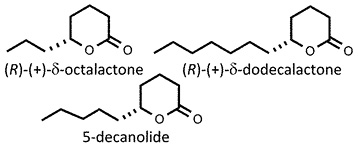 Cocos nucifera
Cocos nucifera
coconut
Back to “Spices: coconut (Cocos nucifera)fr”
Cocos nucifera L. (Arecaceae/Palmae); kokosneut, klapper (Afrikaans); noix de coco (French); Kokosnuss (German); kelapa (Indonesian); kelapa (Malay); nuez de coco (Spanish); maphrao on (Thai)
DESCRIPTION The large fruits (coconuts) have a smooth outer skin (epicarp), a fibrous middle layer (mesocarp) and a hard inner shell (endocarp) which encloses the nut. Each nut comprises a small embryo and a large, white, fleshy endosperm with a central cavity filled with a watery liquid (coconut water). The main culinary products are the dried and shredded or powdered oily endosperm (copra) and coconut milk (macerated fresh endosperm, forming a milky liquid).1,2
THE PLANT This palm tree reaches 30 m (ca. 100 ft), but only 10 m (ca. 33 ft) in dwarf cultivars and bears clusters of large fruits of up to 2 kg (4.4 lbs).
ORIGIN It is thought to have originated from the Malesian region (between Southeast Asia and the western Pacific).1,2 Sea currents and indigenous people distributed it to the Pacific and Indian oceans some 3 000 years ago, and more recently Portuguese and Spanish explorers took it to all tropical regions. Coconut was once a major source of cooking oil and many by-products (such as coir for rope) but has reverted back to being a multi-purpose subsistence plant.2
CULTIVATION Coconut palms require humid, wet and warm conditions, with the mean daily temperature not dipping below 12 °C (53.6 °F), as well as full sun and sandy soil.3 It tolerates saline conditions.
HARVESTING Coconuts are picked by workers climbing the trees (using notches cut into the stems) or by using knives mounted on long bamboo poles. Harvesting and processing is labour intensive. About 40 billion coconuts are produced each year, mainly in the Philippines, Indonesia, India and Sri Lanka.1–3
CULINARY USES Dried coconut and coconut flour are used worldwide in confectionery (biscuits, cakes), while fresh endosperm is used in Indonesian and Polynesian vegetable, fish and meat dishes. Coconut milk adds a distinctive flavour to Indian curries, stews and rice. It is used as a marinade for meat and may be added to desserts and pastries. Edible oil (coconut butter), extracted from copra, is used to manufacture ghee, margarine, ice cream, imitation dairy products and chocolate. Sugary sap, tapped from flowering stalks, provides palm wine and palm vinegar after fermentation.
FLAVOUR COMPOUNDS The distinctive coconut flavour is caused by several δ-lactones of aliphatic hydroxy-carboxylic acids,4 ranging in chain length from 8 to 14, such as R-(+)-δ-octalactone and R-(+)-δ-dodecalactone. The most important flavour compound is considered to be 5-decanolide (5-pentyloxan-2-one),4 also found in wine and butter. It has a sweet, creamy, milk-like flavour.

NOTES The endosperm contains 65% saturated oil but no cholesterol – this is a common error in the literature.3
1. Mabberley, D.J. 2008. Mabberley’s plant-book (3rd ed.). Cambridge University Press, Cambridge.
2. Harries, H.C. 1995. Coconut. In: Smartt, J., Simmonds, N.W. (Eds), Evolution of crop plants (2nd ed.), pp. 389–494. Longman, London.
3. Adkins, S.W., Foale, M., Samosir, Y.M.S. (Eds). 2006. Coconut revival–new possibilities for the ‘tree of life’. Proceedings of the International Coconut Forum held in Cairns, Australia, 22–24 November 2005. ACIAR Proceedings No. 125, 103 pp.
4. Jirovetz, L., Buchbauer, G., Ngassoum, M.B. 2003. Solid-phase-microextraction-headspace aroma compounds of coconut (Cocos nucifera) milk and meat from Cameroon. Ernährung/Nutrition 27: 300–303.